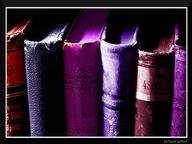Quiz Answer Key and Fun Facts
1. Where in France is Rabelais's birthplace traditionally situated?
2. We first find Rabelais as a member of a religious community at Puy Saint-Martin near Fontenay-le- Comte. What - at that time - rather traditionalistic religious order is he a member of there?
3. Rabelais was not very happy with the intellectual climate at Fontenay. When his superiors take away his Greek books, he decides to leave the convent. What does he become now?
4. Somewhat later, in 1531, we hear of Rabelais as having become Bachelor of Medicine. What was the famous French University that specialised in medicine?
5. When in 1532 Rabelais published his first book 'Pantagruel King of the Dipsodes', he used a pen name. That seems to have been a wise strategy as in October 1533 the Sorbonne censored the book for 'obscenity'.What pseudonym had Rabelais used?
6. When young Pantagruel grows up, he goes to Paris for his studies and meets a wonderful character who answers to all his questions in the most diverse languages: German,Italian, Dutch, Spanish, Greek, Latin,etc. Later this 'scholar' becomes Pantagruel's companion in most of his travels. What is his name?
7. Exaggeration is a characteristic of all Rabelais' works.An example: at every meal Pantagruel's dad, Gargantua drinks the milk of 17,913 cows.When the Parisians are behaving like paparazzi and keep following him, he finds a rather carnivalesque solution. What is it?
8. In 1542 Rabelais published a second volume in which we are told the life-story of Pantagruel's father, Gargantua, an equally formidable giant. What is special about his birth?
9. The education of Gargantua is a very important aspect of the book. He does not get the ancient medieval type of education in which learning by heart of meaningless things predominated, but a fairly rigorous study-schedule in which no time is wasted to give the student a 'universal' education. Who is Gargantua's teacher?
10. As a reward for his role in defeating Picrochole, Friar John is allowed to establish an abbey completely to his own taste.The description of this so-called 'Abbey of Theleme' is a corner-stone of Rabelais' real theological and philosophic thinking. The ground-rule in that abbey was an adaptation of a line from St. Augustine which for Rabelais summarizes what true religion comes down to. What was the famous motto?
Source: Author
flem-ish
This quiz was reviewed by FunTrivia editor
CellarDoor before going online.
Any errors found in FunTrivia content are routinely corrected through our feedback system.
